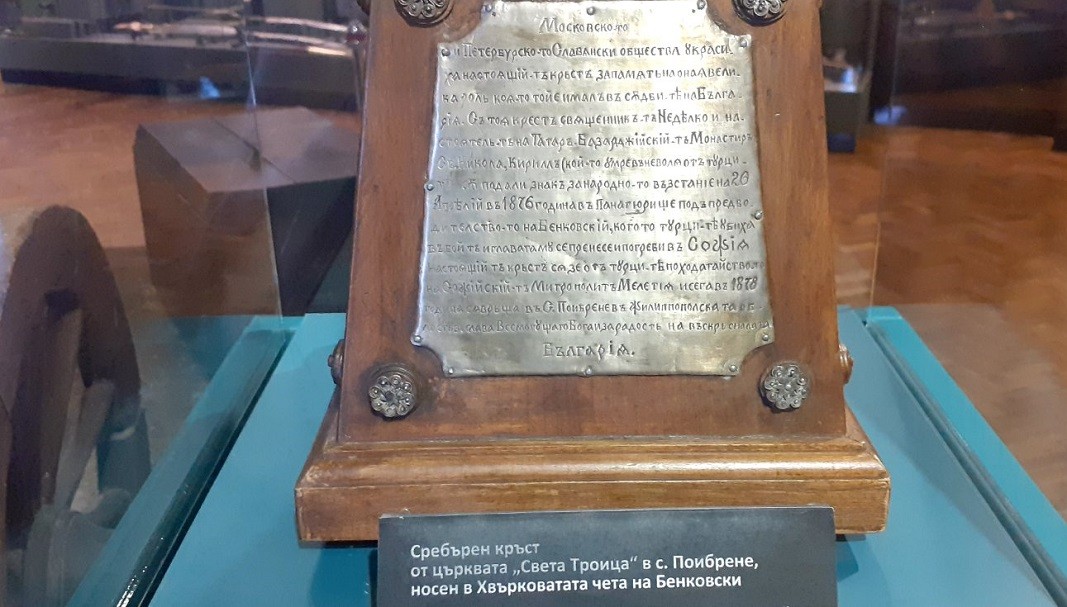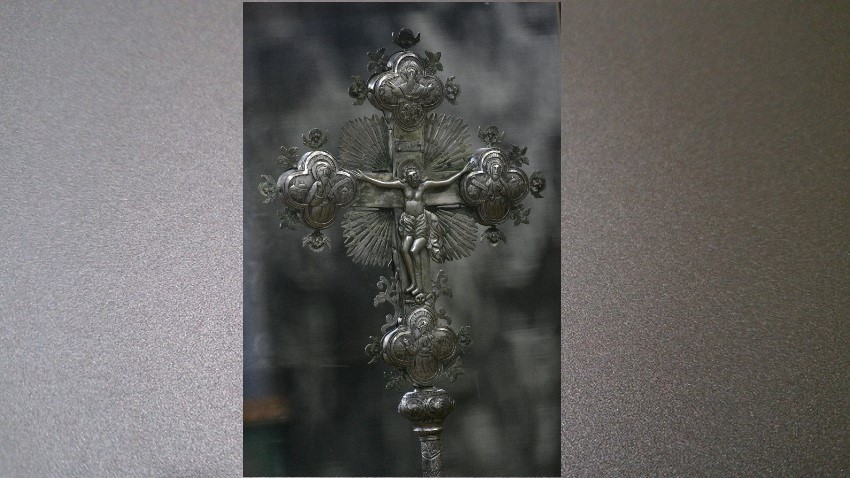There is a shrine from Bulgaria's heroic past, before which every Bulgarian should stand with faith and bow with respect, as our ancestors who participated in the April Uprising did. The silver cross from the village of Poibrene located in the Sredna Gora Mountain was consecrated a century and a half ago not only as a church utensil, but also with the blood of one of the most important figures of the Bulgarian Revolutionary movement against the Ottomans - Georgi Benkovski.
May 1 is a day that for us, Bulgarians, is equivalent to a national holiday, because on this day, in the new style calendar, we celebrate the outbreak of the April Uprising - the turning point on the way to freeing Bulgaria from the five centuries of Ottoman Domination.
It's been 147 years since that memorable date April 20 (in the old style) when Todor Kableshkov announced the uprising ahead of schedule, taking over the Turkish konak (an official residence of an official) in the town of Koprivshtitsa, at the foot of the Balkan Mountain. Immediately after the successful action, Kableshkov wrote the famous "Bloody Letter", with which he informed the revolutionaries in the nearby town of Panagyurishte that the uprising had begun.
In response, Panagurishte residents rose in uprising on the same day. However, the forces of the rebel were not equal to the might of the Ottoman Empire. In just a month, the uprising was drowned in blood. More than 30,000 people were killed, but their lives were not lost in vain, because their sacrifice attracted the attention of the world.
However, history is not only what we read in books and textbooks, it is a living presence in the memory of our people. The story of the fate of the silver cross from the village of Poibrene sounds almost like a legend. The revolutionaries took it as a sign of Heavenly Protection over Benkovski's Flying Detachment of revolutionaries.

In fact, the very making of this cross has a miraculous history. In those years /around 1850/ there was a person named Geno who lived in a hamlet of Poibrene. While digging his vineyard, he found a huge jar of silver coins. With this wealth, he purchased property and became wealthy, but then a series of losses of children in the family followed. Then old people suggested to his son Ivan to do some charity for the church. And in 1865 he most likely provided silver money from the jar for the making of an inlaid cross.
The cross was donated to the Holy Trinity Church in Poibrene. Word immediately spread among the local people that after the donation, the misfortunes in the family ceased. This caused people from near and far to flock to the church to see the miraculous relic.

The Poibrene cross is an unchanging witness to all the events of the spring of 1876. It was carried with Benkovski's detachments of rebels through the short but glorious history of the April Uprising in Koprivshtitsa, Panagyurishte, Klisura, Batak, Poibrene and all the places of the rebellious Balkan. Today, the precious cross has a central place in the Renaissance Museum in Panagyurishte. How this ecclesiastical vessel from Poibrene became one of the greatest relics for the museum, we learn from Irina Boteva, chief curator of the Historical Museum in Panagyurishte:
"The cross from Poibrene was made in 1865 by the goldsmiths of Panagyurishte when a resident of the village gave silver to the craftsmen, with which they can make a cross. We do not know if it is a legend or the truth, but the people of Poibrene strongly believed that this cross was sacred. When it was taken out of the church to take part in the processions, people literally fell on their knees and lay down on the ground to worship the silver cross. For this reason, Father Nedelo Ivanov, when he decided to join Benkovski's Flying Detachment, took this cross with him so that it could bring victories”, Irina Boteva explains.
Reportedly, Priest Nedelo Ivanov fell ill and his successor in carrying the cross became Father Kiril Slepov from the Kalugerovsky Monastery. He accompanied Benkovski after the breakup of the squad and was with him until his death. When Benkovski was killed and his head was cut off, then the Turks also detained Father Kiril Slepov. Benkovski's head, together with the cross, were put in a bag and on the way to Sofia they were tied to the neck of Father Kiril Slepov. Then the priest was sentenced to exile in Asia Minor, where he died.
After the Liberation, with the cooperation of the Slavic Society and Metropolitan Miletius, the cross was recovered from the Turks and returned to the church in the village of Poibrene. There, the board of trustees decided that its place is in the museum, because it is one of the relics of the April Uprising, and whoever sees it can learn about the history of the cross and bow before it. Thus, this cross has turned into a symbol of the April Uprising and the heroism of Panagyurishte residents and in general of the rebels from the April Uprising”, says Irina Boteva in an interview for Radio Bulgaria.

Read also:
There are rumours and speculations that some forgeries, so good that they are not inferior to the originals, could be found among the exhibits in the museums, but at the moment a whole series of forgeries can be seen at an exhibition..
A unique statue from the Roman period of Odessos, preliminarily dated to the late 2nd to the first half of the 3rd century, has been discovered during excavation works near the train station in Varna, said archaeologists from the Varna Regional..
Petrich municipality has received an award for original promotion of the tourist destination Heraclea Sintica , Katya Stoyanova, head of the "Restoration, conservation and socialization of Heraclea Sintica" project, said this for BTA. The award..
105 years ago, on November 27, 1919, a treaty was signed in the Parisian suburb of Neuilly-sur-Seine, officially ending Bulgaria's..
The head of the statue of Tyche, the goddess of Philippopolis, has been discovered in the Episcopal Basilica in Plovdiv, said the head of the..

+359 2 9336 661
